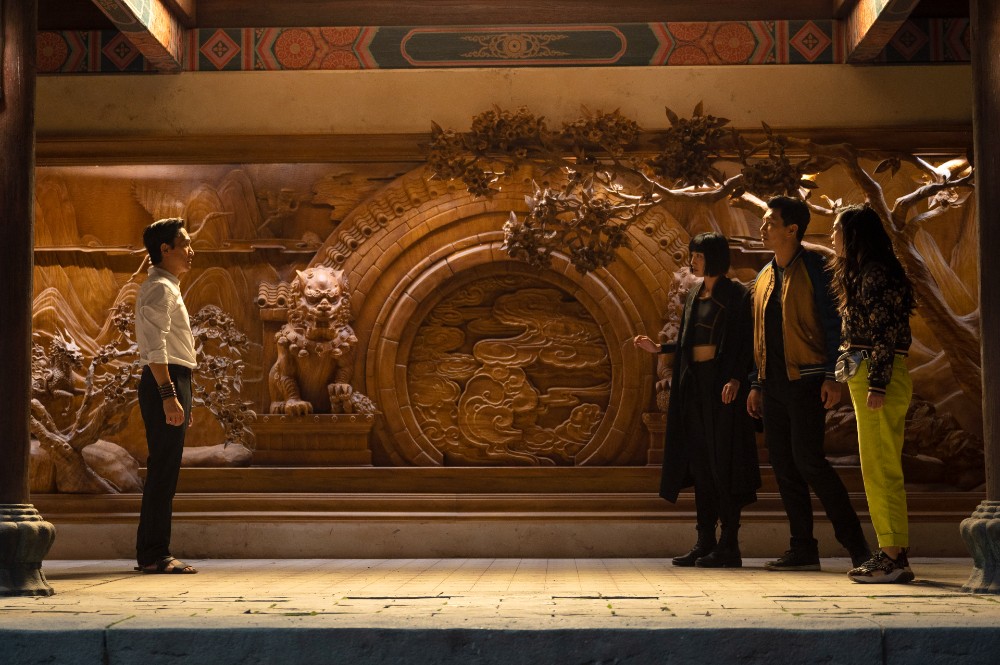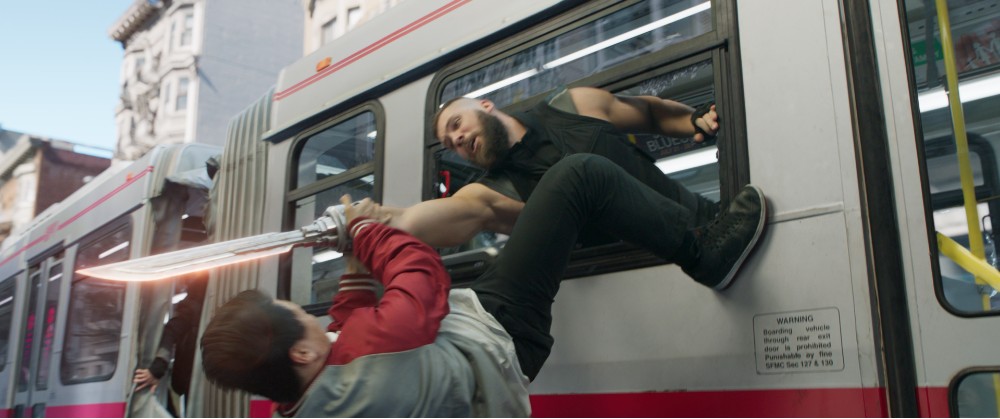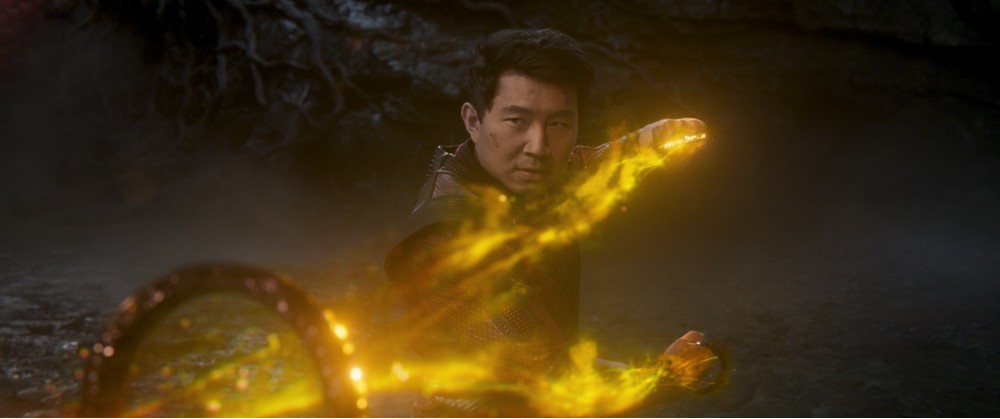
The box-office smash Shang-Chi and the Legend of the Ten Rings updates a 1970s comic book into the Marvel Cinematic Universe. It’s the feature debut for Simu Liu as a martial arts master who has to confront his family’s past. It’s also a turning point in the career of director Destin Daniel Cretton, whose 2013 feature Short Term 12 brought him to the attention of Cinematographer Bill Pope.
Pope has shot several blockbusters, including two Spider-Man movies and Men in Black 3, along with the original Matrix trilogy. He’s collaborated frequently with directors like Edgar Wright, and also worked extensively in music videos for Beck, Pharrell Williams, Metallica, and many others.
In Shang-Chi, Pope pays homage to Hong Kong martial arts films, while capturing the outsized characters, vivid colors, and quick humor of the MCU.
He spoke with Below the Line via Zoom from Los Angeles.
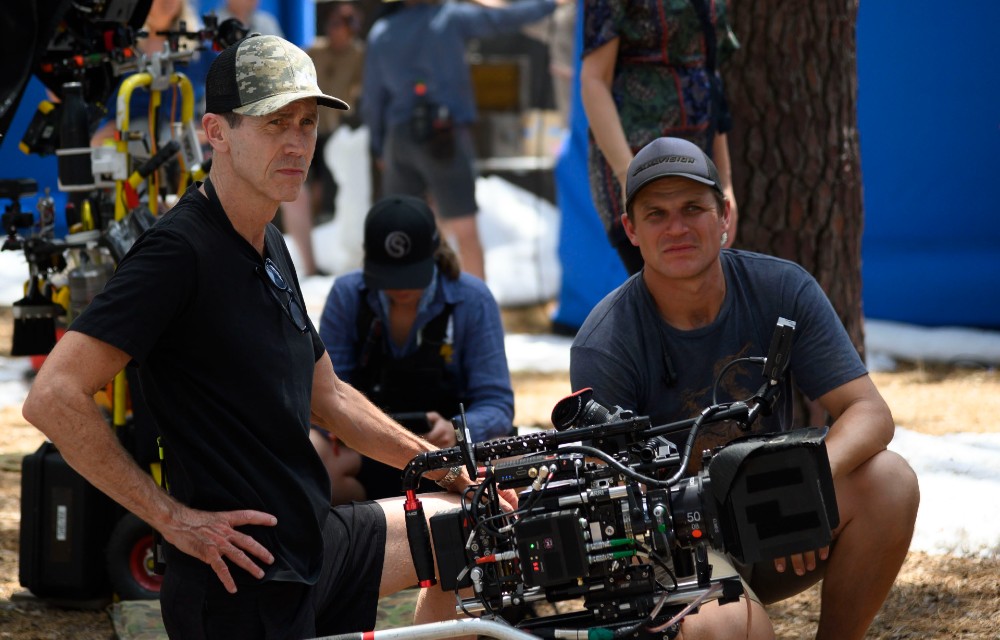
Below the Line: Why did you decide to work on this film?
William Pope: Years ago, I saw a movie that Destin directed called Short Term 12. I loved it so much, I called my agent right afterwards and said, “I don’t know who this guy Destin Daniel Cretton is, but, the next time he does anything, just let me know and I’ll do it. I don’t care what it is.”
Years later, I get a call that he was looking for someone to do Shang-Chi. I was like, a Marvel movie? I assumed it would be another low-budget film. I went to meet him, we got along. He wanted someone to help with the technical end of the project, someone who wasn’t going to run over him.
BTL: Was he worried about the size of the project?
Pope: Destin is a pretty laid-back guy, he’s hard to read when you first meet him. He’s just very quiet. We’d be in this incredibly technical meetings and he’d ask, “Which one do you want to do? I’ll think about it.” He’s really cagey and quiet and bides his time until he knows exactly what’s going on. Then, when he makes a decision, he’s very strong.
I can’t even imagine going into a huge technical movie, never having done visual effects at all, never having hundreds of millions of dollars in assets at your beck and call, and never having experienced the Marvel situation in which scripts are always in development.
Virtually every meeting has some aspect of writing in it. You are always pitching ideas and working things out. You’re always talking about every single aspect of the show, from character to story to the look. It’s a constantly evolving train set, and it overwhelms a lot of people. It overwhelms established directors who’ve worked in the visual effects world. So for someone like Destin to take it by the horns like that is a testament to his talent and strength.
We did have a gift from the gods in the middle, a three-month pandemic hiatus, so he was able to stay in Australia and work on it, rewrite it, get it together. Which you almost never get in the middle of a movie. Once you start, as you know, it’s like diving underwater. You don’t get to come up for air until it’s over.
BTL: Did you find the new protocols difficult?
Pope: Not really. It’s like filmmaking with a muzzle on. Communication is really what you’re after. In prep, you’re usually around sets with motors and backup noises and people yelling and so forth. Even these big sets are noisy, so that was an inconvenience. You learn to walk over to somebody and speak to them from three-feet apart.
The visual effects budget for extras went way up. We were allowed a very bare minimum number of extras. The ones in between were just made of visual effects.
BTL: Shang-Chi has a different look from other Marvel films. For instance, the San Francisco scenes have a more realistic grounding.
Pope: I don’t think Destin and I paid any attention to what a Marvel movie was going to look like. Kevin Feige and the other producers just said, “Make it look like what you want it to look like. This is a movie unlike anything else. We don’t want it to fit anywhere, we just want you to make a movie.” I don’t know how to copy somebody else’s stuff anyway.
BTL: You do make visual references to Asian martial-arts films.
Pope: Those were sort of unconscious. I mean, we both inhaled all the Hong Kong movies. Hero and all the other famous movies are just part of our DNA at this point. Since Ang Lee’s movies, the Western audience is used to seeing that visual vocabulary. We didn’t really talk about anything, I guess Hero was kind of the only one. It’s hard not to talk about that movie.
BTL: That brings up Tony Leung Chiu-wai and Michelle Yeoh, two of my favorite performers.
Pope: They’re really lovely human beings, lovely to be around. They’re both just wonderful. Michelle is really funny. She always plays these tough fighting women and she’s super sweet and kind of dainty and very warm and huggy. The first time you see her in this movie, there’s a standoff with Shang-Chi on one side and the villagers on the other. Michelle walks up and hugs Shang-Chi, which I don’t think was even in the script. Michelle’s like, “This is what I would do,” and we answered, “Well, that’s what you’re going to do then.”
BTL: The action sequences here are just extraordinary. Can you talk about working with stunt choreographers to put them together?
Pope: First, you hire Brad Allen. He brought an entire team with him. He was an impresario as well as his own type of fight coordinator. He always brought people up and encouraged people, the way he was encouraged by Jackie Chan.
The fight between Wenwu [Leung] and Li [Fala Chen], where they sort of fall in love, that was the one that was most like Hero for us. I wanted the village to have a golden feel. It’s when Wenwu first encounters something that he doesn’t quite understand, something full of love and connection that is more powerful than his antagonistic viewpoint of life.
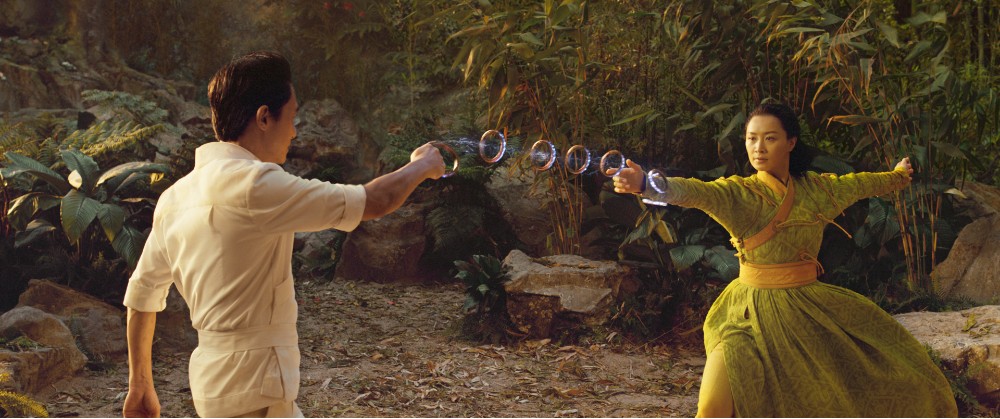
I wanted to bathe the village in that golden light, make it a beautiful place with water spilling down and red flowers.
One of Brad’s teams put that fight together. They would show us something, and Destin and the rest of us would all give feedback, then they’d show us something else. They would film it on a stage with boxes for props, but nonetheless, it’s super exciting. It’s the first time I’d ever seen a love battle.
On the day we’re shooting, we can follow that template. We literally can go over to the playback and ask, what’s the next shot? And we’ll shoot it. Or if these 10 shots are alike, we’ll shoot all of them at the same time. Otherwise, there’s no way to get through it on time. If you’re going to give any character to it, any originality, it all has to be pre-thought.
BTL: You can’t just wing it.
Pope: Those days are long gone. There’s no bar fighting anymore. “Hit me on the chin and I fall over” — that stuff is not happening.
BTL: There are two outstanding martial arts sequences, one on a bus and another on a construction scaffold.
Pope: It takes a month or more to put one of these fights together. We had teams all over, working on a fight here, a fight there. We had two buses sitting there for a long time. They rehearsed in them, took them apart, put them back together. The bus set was a lot of fun to visit, they were clever as hell. They would come up with new ideas all the time.
BTL: What were the challenges to the scaffold fight?
Pope: The main difficulty was working vertically. That, and trying to get a camera to go through those bars and see what’s happening without confusing the audience.
The scaffold set was built so we could lean it back to whatever angle we wanted. So when they’re falling, they’re also sliding, you know, they’re not falling straight down, which would be too fast and uncontrollable.
BTL: The geography of the action was very clear. The stunts are put together and filmed so you can see what’s happening. That’s part of the Hong Kong tradition of filming action, and you frame shots to show all the parts of the body the viewer needs to understand how the action progresses.
Pope: If there’s any major contribution Destin and I made to those fights, it’s that they must tell a story. They cannot just be kinetic fights. There must be a character or story arc in jeopardy. We would be given five shots, you know, this leads to that, etc. Each one a separate shot, and we would answer, no, we want to see all those things happen in one shot. That way the audience is not losing its connection to the fight. Because each cut requires viewers to get back into the shot to see what’s going on. With five shots, that’s all happening too fast. Whereas, if you can step back, viewers can see what’s going on. The first part of any shot is the mind adjusting itself to that shot. This way we can be involved with the content, involved with the emotion. I don’t feel old-fashioned in saying that I feel it’s human based. We’re dealing with what human beings can understand and more importantly, feel.
BTL: How do the visual effects impact what you’re shooting?
Pope: The dragons and stuff? They’re boarded, and you have to previs it. Third Floor or ILM or somebody comes up with a moving previs so the actors and crew can understand what’s happening. Even if you don’t follow it, you have to have an overall understanding among all the departments of what you’re doing.
BTL: But that doesn’t explain the pacing and timing of your camera moves.
Pope: Just like the stunts, you start with meetings during prep. Destin will say, “This is how I see the scene happening. And these are the shots I would like.” The previs artists aren’t starting from scratch, they’re starting from intense notes from the director or the visual effects supervisor or me. They show the previs at a meeting with the director, the producers. I’m there, the stunt coordinators are there, the AD. We look at it and ask, “Is this what we want?”
Destin gives intense notes, it goes back and forth. There could be as many as 10 iterations before you get to something that’s acceptable to him. Then we move in and figure out how it’s actually done in the real world. What do we make? How does it move through space? Is the camera locked or does it move in relation to it? It all has to be figured out in incredibly minute detail beforehand.
BTL: The tempo and pacing in previs might not be what you want when you’re shooting.
Pope: No, and that’s something you have to keep in mind. Previs moves digital characters around in a way that humans often can’t do or won’t do or are not interested in doing. Previs assumes a lot of things, and many times the actor shows up and says, “Well, that’s not what my character would do.”
All right, let’s talk about what your character’s going to do. This is what the dragon looks like, we know that. What do you want to do with it? It’s always a give and take. It’s always being made. You don’t finish until it goes to the theaters.
You may not want to get stuck with the pace of the previs. You can be pushing in on an actor who’s running up the back of a dragon. [I don’t know why I’m stuck on dragons.] When you actually make a huge green dragon for the actor to run up, you learn that it’s not physically possible for a human to run up the back of a dragon that fast. Or maybe he would rather jump off and go somewhere else. Now the camera move that was made and the pacing and the cutting are completely different. You only got through one shot and it’s already “whoosh” out the window.
BTL: I’m really grateful that you’re explaining this, because some people feel you’re just repeating or duplicating something that’s already been worked out.
Pope: Hollywood has always used storyboards. I saw a photo the other day of William Cameron Menzies standing in front of a Mitchell camera, he’s got a suit on, the way they used to wear suits to work in those days. And he’s looking at an illustration, a sketch he made, to figure out how to shoot it.
It’s been a little dirty secret since the beginning of motion pictures. You just use whatever you can get. Making a film is a big machine full of people, a lot of people you have to coordinate. You have to get everybody on the same page all the time. Communication is what our business really is. I always tell my crew, “We’re all going to take a step forward. Now, everybody ready? We’re going to step forward. Good. Now, we’re all going to take one more step.” That’s what making a movie is. Nobody moves ahead until everybody moves ahead.
Shang-Chi and the Legend of the Ten Rings is available to watch via streaming on Disney+, as well as via On Demand platforms (Prime Video, YouTube, etc.)
You can also read Below the Line’s interview with Shang-Chi Stunt Coordinator Andy Cheng.
All images courtesy Marvel Studios/Disney, except where noted. Click on images for larger versions.

